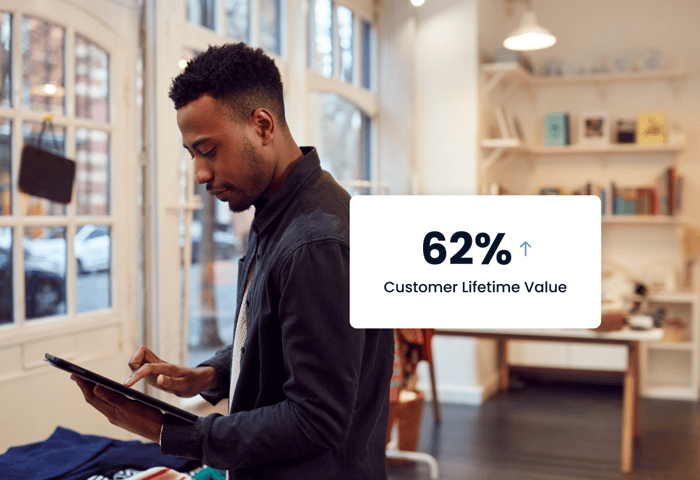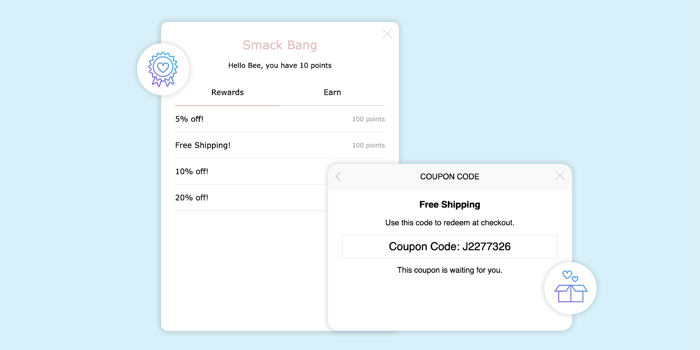
5 Ways to Measure Retail Customer Lifetime Value
Written by Sophie Macdonald | ReadThe saying “You have to spend to make money,” is quite true in the world of retail. As a store owner, you often have to invest in marketing and advertising to acquire new customers and generate revenue. The question is, exactly how much should you spend on customer acquisition to ensure that your efforts are worth it?
To answer that, you need to calculate your Customer Lifetime Value (CLV).
Sometimes referred to as Lifetime Value (LTV), this metric is the amount of revenue or profit that your business stands to generate from each customer during their lifetime. So, if your CLV is $50, then that tells you that it shouldn't cost more than $50 to acquire each new customer.
There are a number of formulas for computing CLV, and the right method will depend on your business model, customer behavior, and available data, among other things.
To help you figure out the right CLV calculation method for your business, we’ve put together some of the most common CLV methods used by eCommerce merchants. Check them out and see which one is the best fit for your business.
Download the free CLV Calculator
Use Marsello's free calculator to quickly estimate your average CLV.
1. Use the simple CLV formula.
The no-frills way to compute your CLV is to subtract the cost to acquire and serve customers from the revenue that you’ve earned from them. To do this, use the formula:
LTV = Lifetime Customer Revenue – Lifetime Customer Costs
So, if you earned $200 from a customer over their lifetime and you spent $140 acquiring and serving that customer, then their lifetime value is $60.
Since CLV is often defined as the profit you’ve earned from your customers, then it technically makes sense to subtract your customer costs from your revenue. That said, this takes a very simplistic view of CLV, and it becomes problematic when you’re calculating the CLV of entire customer groups or segments.
That’s because this formula doesn’t take into account the fact that not all your customers spend the same amount at your store. Not to mention, shoppers don’t all stay active within the same time period i.e., certain customers are active for 2+ years, while others just purchase once and then become dormant.
For this reason, it’s a good idea to use more complex CLV calculations to ensure that you’re able to factor in different customer variables.
And that brings us to our next formula...
2. Determine CLV based on customer revenue distribution
Another way to calculate your customer lifetime value is to look at how revenue is distributed across your customer base. You can do this by benchmarking customer spending in your business and then grouping your customers based on those spending thresholds.
Let’s say that spending in your company typically falls into the following buckets:
-
Customers who spend $25
-
Customers who spend $50
-
Customers who spend $75
-
Customers who spend $100
The next thing you need to do is to figure out how many customers fall into each bucket. So you might list them as follows:
| No. of customers | Revenue |
| 98 | $25 |
| 80 | $50 |
| 102 | $75 |
| 68 | $100 |
You’ll want to sum up the lifetime value of all your customers using the formula
(# of customers 1 x revenue) + (# of customers 2 x revenue) + (# of customers 3 x revenue) & so on
So the example above would be:
(98 x 25) + (80 x 50) + (102 x 75) + (68 x 100) = 20,900
You can divide that amount by your total number of customers to get the CLV
= 20,900 / 348 = $60.05
This is a good calculation to use especially if your basket sizes vary from one customer to the next. As The Balance explains, this CLV formula accounts for the fact that “some customers may be one-time or occasional buyers, versus the regular purchasers on the other end of the scale who have a higher LTV and generate the most profits.”
3. Multiply customer value by average customer lifespan
This CLV calculation is the one recommend by Shopify. What’s great about it is that it factors in a number of variables, including average order values, purchase frequency, and customer lifespan.
This method uses the formula:
Customer Value x Average Customer Lifespan = Customer Lifetime Value
Let’s break down what each of these components means.
To determine Customer Value, multiply your Average Order Value (AOV) by Purchase Frequency. You can find your AOV by dividing your Total Sales by the Number of Orders.
Meanwhile, to determine Purchase Frequency, divide the Number of Orders you have gotten over a certain time period (say 1 year) by the Number of Customers you have within that same time period.
Once you know your AOV and Purchase Frequency, multiply those figures and you’ll get your Customer Value.
Next, let’s talk about the Average Customer Lifespan. This figure pertains to the length of time that a customer is active. You may need to examine your purchase history to figure this out, though some experts say that 1-3 years is a good estimate.
Once you’ve determined your Average Customer Lifespan, you can go back to the formula above, Customer Value x Average Customer Lifespan to find your CLV.
Total sales + No. of orders = Average Order Value
No. of orders (1 year) + No. of customers (1 year) = Purchase Frequency
Average order value x Purchase frequency = Customer Value
4. Multiply lifetime value by profit margin
Another way to approach CLV is by multiplying Lifetime Value by Profit Margin. According to Clever Tap, this method takes your expenses into consideration so you're able to figure out the net value that you get from each customer.
Lifetime value x Profit margin = Customer Lifetime Value
The formula for this method is: Lifetime Value x Profit Margin, wherein Lifetime Value is Average Order Value multiplied by the Number of Transactions, which is then multiplied by Average Customer Lifespan.
Average order value x Number of transactions x
Average customer lifespan = Lifetime Value
Lifetime value x Profit margin = Customer Lifetime Value
Once you have that, then simply multiply the Lifetime Value by your Profit Margin – i.e., Lifetime Value × Profit Margin to find your CLV.
Download the free CLV Calculator
Use Marsello's free calculator to quickly estimate your average CLV.
5. Let your marketing software do it for you
Calculating customer lifetime value can be a complex task, which is why it’s often better to use software when figuring your business’ CLV.
A growing number of marketing platforms (including Marsello) can now use artificial intelligence to accurately calculate your CLV. These solutions do this by analyzing your customers’ purchase behavior in your business (as well as in stores similar to yours) to determine their lifespan and the amount of value that you can gain from them.
Even better, AI marketing solutions even let you compare your CLV with your industry’s average. For example, since Marsello can analyze shopping trends across multiple industries, we can figure out the average lifespan values of stores in specific verticals, and then surface those insights for you. That, in turn, can give you valuable knowledge of how your business measures up and helps you improve your marketing and advertising efforts.
Knowing your CLV is a must!
Regardless of how you decide to calculate your customer lifetime value, it’s essential that you do it regularly. CLV can help you make important decisions including, how much to spend on customer acquisition, which channels to invest in, and how to provide even more value to shoppers.
That’s why if you haven’t done so yet, now is the time to figure out your CLV ASAP. And if you need help doing that, feel free to get in touch.
FAQs
What are the common challenges or pitfalls in gathering accurate data for CLV calculations, and how can they be overcome?
Overcoming challenges in gathering accurate data for CLV calculations entails employing advanced analytics, maintaining high-quality customer data, and integrating various data sources for a comprehensive view.
Can CLV be effectively used to predict future business growth, and if so, how?
Effectively using CLV to predict future business growth involves analyzing trends in CLV over time, segmenting customers based on their value, and applying predictive modeling techniques to forecast changes in customer behavior and business outcomes. These approaches require a blend of statistical analysis, customer insight, and strategic planning to enhance accuracy and usefulness.
Measure your CLV with Marsello
Plan and schedule social posts, email & SMS campaigns, and automations. Run loyalty and referral campaigns. Track and measure the impact of all your marketing on revenue.







